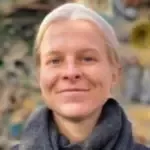Killings and massacres based on race, as well as systemic social, economic and political issues defined by race, ethnicity, religion, gender and sexual orientation have plagued our nation since its inception.
The latest example of an attack reported to be based on such bigotry is the allegedly targeted murder of an Indigenous boy in Perth – leading many socially conscious individuals and groups to question whether much has changed in terms of endemic racism since Australia's colonisation in the late 18th century.
The Latest Incident
Aboriginal teenager Cassius Turvey was the victim of a brutal attack in the eastern suburbs of Perth in October 2022. The 15-year-old was chased and 'struck on the head with a metal pole', leaving fatal wounds that would see the Noongar Yamatji boy die in the hospital 10 days after the incident.
23-year old Aleesha Gilmore, her then-boyfriend, 24-year old Jack Brearley, as well as 29-year old Brodie Lee Palmer and 26-year old Mitchell Colin Forth are currently on trial in the Supreme Court Western Australia for the offence of murder in relation to the tragic incident.
Mr Brearley is alleged to be the ringleader of the vicious attack, with the prosecution alleging he was 'hunting' in retaliation for a local Indigenous teenager allegedly smashing the windows of his car.
It is alleged that Forth, Palmer, and Gilmore knew of Brearley's plan when they met up to facilitate the attack.
Mr Brearley is relying on the legal defence of self-defence in an attempt to defeat the charges. He asserts that he fought back after the teen pulled out a knife on him. Refuting prosecution claims he struck Cassius with a metal pole, Brearley claims it was Palmer who used the weapon which led to the teen's death.
Meanwhile, Palmer tells a different story – claiming to have been struck his truck during the incident, and hearing Brearley shout that he had been stabbed.
Palmer states he 'came across Jack standing, bent over Cassius on the ground and yelling at him.'
Palmer was also able to give more information to clarify the relationship between the co-accused, noting that he was 'drinking and chatting' with Brearley, Gilmore, Forth, and his girlfriend on the day of the incident at their home in the Perth hills.
The evidence at trial
One of the key aspects of the case in finding out who was guilty of murdering Cassius by wielding and using the metal pole that delivered the fatal blow is whether Palmer is telling the truth about his involvement in the incident. Palmer claims that he attempted to deter Brearley from threatening and yelling at Cassius as he lay on the ground apologizing, with Palmer allegedly pushing Breaerley away from the person on the ground and shouting, 'What the f— are you doing?'
Palmer noticed that the person on the ground's head was covered in blood, but that Palmer's intervention 'saved' the boy's life. He claims the injured boy got up off the ground and walked off toward his group of friends.
Brearley, the supposed attacker, was 'freaking out' and had two wounds on the back of one of his legs. Brearley and Palmer drove to a family member's house, where the former discussed fleeing the area so he could 'hide out.' Three days after the incident, Brearley turned up at Palmer's home at 2 am and threatened him with a shotgun to keep him quiet.
All of the new information recently released about this case directly contradicts what Palmer has said in prior interviews. His lawyer, Christian Porter, said that his client feared what his co-accused would do to him after the threatening incident at his home, so he stayed quiet.
And there is no evidence to suggest that Brearley, the man who was initially accused of holding the pipe and striking the fatal blow, is telling the truth. During evidence on Thursday in the supreme court, Brearley told the jury that he didn't hit Cassius' head with a metal pole on 13 October 2022, blaming solely Palmer for the incident. However, Palmer's lawyer found numerous inconsistencies with his story during cross examination.
Brearley was unable to consistently describe and identify what Cassius looked like during the incident, fabricated stories regarding Cassius' injuries during the fight, and accurately described the location near the creek where he said the fight was said to have taken place.
Not the first case
This isn't the first — and probably won't be the last — racist killing to occur in Australia since the country's inception.
The Frontier Wars is arguably the most well-known of all racially-motivated incidents within the country. The First Nations people formed a resistance to the British invasion in 1788 and continued as late as 1934 in some regions of the country. Despite colonialists attempting to eradicate this event from the country's history, these conflicts started to re-emerge in history books and school curriculums in the past couple of decades due to 'black armband' historians who disproved the false notion of peaceful settlement.
Fights within the decades-long Frontier Wars included the Bathurst War between the Wiradjuri Nations' people and British forces in 1824 when the native people began raiding the colonialist invaders trying to overtake their land. The retaliation ended in bloodshed, seeing a complete decimation of the local people by September of the same year.
The infiltration of the native people's land continued for the next several decades, marked by key events like the murderous rampage of Major Nunn and the NSW Mounted Police carrying out the Waterloo Creek Massacre in 1838 resulting in the death of more than 300 Indigenous people.
What was even more concerning, if it was even possible, was the blatant disregard for justice for those who were rightfully on the land in the first place. The very same year of the horrific massacre, 50 Gamilaraay people were camped out near Myall Creek station. On 10 June, a group of ten stockmen tied up the innocent people, led them away from their camp, and brutally murdered every Aboriginal person.
The aspect of this case that gained notoriety wasn't the horrific nature of the deaths, but was the acquittal of the ten men in a court of law. Thankfully, the justice system changed its strategy to focus on the death of just one child, which saw seven of the ten stockmen guilty. However, the initial acquittal of the men who so egregiously killed innocent people set the tone and precedent for how crimes committed against Aboriginal people would be looked at in the future of the country.
The last dispute that essentially ended the deadly Frontier Wars was the 1928 Coniston Massacre, a slaughter that resulted in the deaths of more than 60 Aboriginal people killed by George Murray and European men.
And the killings of Aboriginal people aren't limited to one-off battles or long-standing takeovers. Indigenous people are murdered and targeted every day in modern times, leading to more than 420 Aboriginal deaths in police custody since 1991. The mass incarceration of Aboriginal and Torres Strait Islander peoples, lack of services, forceful removal of children, and lack of opportunities that lead to mental and physical health problems all create systemic racism within Australia.
Instead of mass killings and massacres that occurred decades ago, potentially only made possible due to the lack of technology that would spread this information around the world, today Australia is marked by killings, targeting, and disappearances of First Nations peoples — especially women.
'Indigenous Femicide in so-called Australia' is an example of a report that highlights a glaring issue within the country that needs to be addressed as soon as possible — the fact that Aboriginal women don't just go "missing", but that someone makes them disappear. Senator Lidia Thorpe made it clear that these women don't just leave their homes and families, but that there are 'white male perpetrators of this violence' who use the same violent tactics 'as it has been since the first invasion and the Frontier Wars.'
The content of this article is intended to provide a general guide to the subject matter. Specialist advice should be sought about your specific circumstances.


